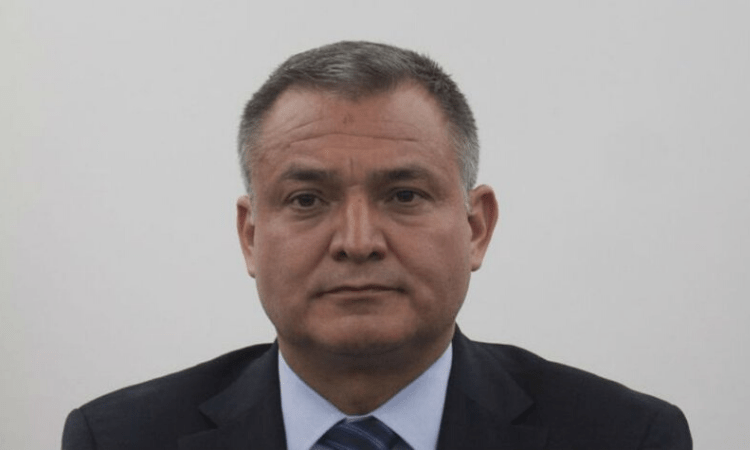Questions
- What charges is García Luna facing in the United States?
- How is García Luna’s career allegedly tied to Mexican drug cartels?
- What criminal schemes did García Luna build to facilitate trafficking?
- How much is García Luna worth?
- Has the Mexican government launched its own inquiry?
Genaro García Luna, the former Mexican official who spearheaded the country’s war on drugs, made a fortune in bribes from the Sinaloa cartel, according to a US federal indictment and media reports. He allegedly cooperated with Mexican organized crime for two decades.
A senior member of the National Action Party (PAN), García Luna headed Mexico’s intelligence agency from 2001 to 2005 and the Ministry of Public Security from 2006 to 2012 during the administrations of Vicente Fox and Felipe Calderón. He then moved to Miami and pivoted his career toward security consulting in Latin America.
One of the firms he founded in the United States was GLAC Consulting, which provided business-risk assessment for Mexican ventures. Its advisory board includes two former US officials who are currently under investigation for their ties to García Luna.
What charges is García Luna facing in the United States?
In December 2019, the US Attorney’s Office for the Eastern District of New York charged García Luna with three counts of cocaine trafficking conspiracy and one count of making false statements. His charges range from 10 years to life in prison; a plea bargain in exchange for information is possible but it comes with risk to his family.
Federal prosecutors say García Luna accepted bribes to permit the Sinaloa drug cartel to operate with impunity in Mexico during his tenure as a senior security official. He also collaborated to ship cocaine and other illicit drugs to New York and other US cities, a criminal conspiracy which involved murder.
Further, prosecutors argue the defendant allegedly lied about his criminal record in 2018 when applying for US citizenship. US authorities had been investigating García Luna for years; the wealth he had amassed was too high even for a Mexican minister.
US federal agents arrested him in Dallas, Texas, last December. García Luna pleaded not guilty and remains in jail without bond.
How is García Luna’s career allegedly tied to Mexican drug cartels?
García Luna started his career in 1989 as a researcher in the now-defunct security intelligence center (CINSEN), where he monitored Mexican guerrilla groups. He went on to work at the Federal Preventive Police (PFP) and the Federal Investigation Agency (AFI) from 2001 to 2006.
Hints of his collaboration with organized crime started in 2004, when the Golfo drug cartel hung a public poster in Oaxaca city, claiming García Luna was helping its rival Sinaloa. PFP agents immediately took it down.
Both the US Federal Bureau of Investigation (FBI) and the Drug Enforcement Administration congratulated García Luna in 2004 and 2005 for his efforts against cartels and started working with him closely in the Mexican drug war.
His military-led efforts exacted a high human toll. During the Calderón administration (2006–2012), García Luna saw annual murders in the country grow from 10,000 to 27,000. During his tenure as public security minister, Mexico received $1.4 billion in US aid and added 30,000 police officers to counter the drug trade.
Mexican news outlet Proceso published several reports from 2008 to 2013 on García Luna’s potential ties to drug cartels. Likewise, in 2008, the former PFP official Javier Herrera Valles sent two letters to then President Calderón telling of García Luna’s influence-peddling.
When García Luna left office in 2012, he moved with his family to Golden Beach, Florida, where he bought a US$3 million home. That was when US officials started investigating him.
During the trial of the famed Sinaloa cartel leader Joaquín “El Chapo” Guzmán, a senior gang member testified García Luna had accepted bribes. Zambada told the court he had paid García Luna tens of millions of dollars to prevent the arrest of cartel members and to not interfere in drug operations.
Mexican journalist Anabel Hernández told the Spanish daily El País that officials who used to collaborate with García Luna may still be in office, manipulating potential probes.
What criminal schemes did García Luna build to facilitate trafficking?
The US Justice Department argues that, in exchange for the bribes, the Sinaloa drug cartel received protection from Mexican government officials and a carte blanche to send cocaine and other drugs to the United States. During the Calderón administration, for instance, arrests of Sinaloa cartel members were lower than for other criminal groups.
US prosecutors claim García Luna placed all Mexican security institutions at the service of the Sinaloa cartel. For instance, he provided confidential information about rival cartels, which helped it increase drug-smuggling to the United States.
Jesús Esquivel, a former journalist with Proceso, told Mexican TV station La Octava that García Luna continued working for the Sinaloa drug cartel even after he moved to Miami.
To launder the bribe money, García Luna and his wife bought two cafeterias in Mexico. They did the same in the United States by incorporating shell companies to purchase their assets.
How much is García Luna worth?
García Luna reported owning no assets in 2006. The next year, when he allegedly accepted a $3 million bribe from the Sinaloa drug lords, he bought a property in a luxurious neighborhood of Mexico City. In 2008, he built a new house in the same location.
The assets García Luna officially acquired in Mexico during the Calderón administration were worth $700,000. According to public records, he earned $683,050 for his different government posts from 2001 to 2012.
García Luna resided in Golden Beach, Miami, when US federal agents arrested him. From 2012 to 2016, he bought a mansion and a penthouse worth over $3 million each.
Mexican journalists revealed that, over just four months in 2018, García Luna and his family spent $5.1 million to purchase six properties in Miami Dade.
Has the Mexican government launched its own inquiry?
Roberta Jacobson, former US ambassador to Mexico and US assistant secretary of state for Western Hemisphere affairs, has told Proceso that both the US State Department and the Mexican government at the time knew about García Luna’s cartel ties. Former President Calderón has issued a statement denying any knowledge.
Andrés Manuel López Obrador, Mexico’s sitting president, accused his predecessors of covering up the affair and suggested that the FBI and the DEA should testify in court.
The Mexican General Prosecutor’s Office (FGR) opened an investigation into García Luna immediately after his arrest in December. Potential charges include cocaine-trafficking conspiracy, false statements, bribery, and organized crime. The FGR said it would request García Luna’s extradition.
On December 24, Mexico’s Financial Intelligence Unit (UIF) released the results of a corruption probe which detected 69 former government officials, including García Luna, had engaged in money laundering, illicit enrichment, and tax fraud. García Luna’s companies allegedly received millions in public funds from 2013 to 2018. In 2017, Mexico City’s Finance Secretariat also sent money to GLAC Consulting to pay for García Luna’s luxurious Miami lifestyle.
On March 10, Alfonso Durazo, Mexico’s current public security minister, announced “several” officials with suspected ties to García Luna had been fired and claimed more could be on their way out.
IO-Memo Genaro García Luna Join us in our mission to foster positive relations between the United States and Latin America through independent journalism.
Join us in our mission to foster positive relations between the United States and Latin America through independent journalism.
As we improve our quality and deepen our coverage, we wish to make the Impunity Observer financially sustainable and reader-oriented. In return, we ask that you show your support in the form of subscriptions.
Non-subscribers can read up to six articles per month. Subscribe here.


